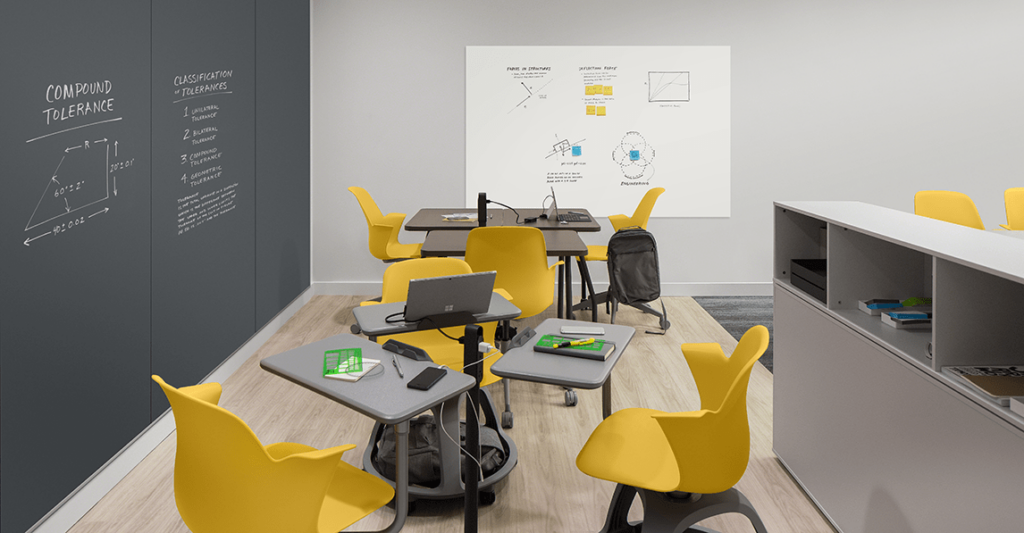Are analog tools still relevant in the age of rapid technological advancement?
It’s a question we ask ourselves when software updates are a weekly occurrence and forgetting your phone makes you feel unbalanced for the day. But, before you dismiss analog tools such as notebooks and whiteboards in the midst of a digital revolution, catch up on the latest research.
A growing number of studies reveal that the combination of online and offline tools can promote learning, retention and collaboration. A recent ECAR National Study of Undergrads is the perfect example, 58 percent of students said they learned more in a blended learning environment with a mix of digital and analog tools.
Why is the blend of both tools so powerful? When it comes to analog tools, the key is retention. Based off cognitive mapping, researchers find that the simple process of writing and jotting notes helps people learn and recall information. The left hemisphere is especially active when we write, freeing up our creative right brain to unleash its power. Maud Purcell, a psychotherapist and journaling expert, told Fast Company “Writing removes mental blocks and allows us to use more of our brainpower to better understand ourselves and the world around us.”
These findings may explain the rise of analog tools like journals and whiteboards. As the makers of the Bullet Journal say, technology helps people connect to others outwardly, but to connect with yourself just grab a pen and notebook and go to work. What the makers of Bullet don’t account for, however, are the social, team-building advantages of analog tools. Whiteboards in particular. So, just how well do analog tools help us connect with others?
They’re terrific at it. With whiteboard surfaces, people have the opportunity to gather in a space and visually think through ideas. This back-and-forth processing and revising of ideas, in real time and space, provides a level of connection that’s different than what you’ll find with most digital solutions. Ideas also stick better when they’re visually reinforced. For evidence of this look no further than a recent University of Wisconsin study, which shows that visual aids can improve learning up to 200 percent.
Of course, there’s really no need to pit digital tools against analog methods. The beauty is in the blend. Findings from the Center for Digital Education reveal that 73 percent of educators who used a mix of online and offline tools experience an increase in student engagement.
Bottom line? Even with the increasing number of ways technology touches our lives, the fact remains: when people physically express their thoughts and ideas, their minds engage in a way that frees up more potential for ideas, solutions and connecting dots.
In corporate and educational settings, the best path to success isn’t one or the other, it’s both. If you want to get the most out of people, there’s room for common ground.
